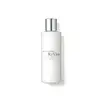What's inside
What's inside
 Benefits
Benefits

No benefits
 Concerns
Concerns

 Ingredients Side-by-side
Ingredients Side-by-side

Water
Skin ConditioningCocamidopropyl Betaine
CleansingLauryl Glucoside
CleansingDecyl Glucoside
CleansingSodium Cocoyl Sarcosinate
CleansingGlycol Distearate
EmollientCoco-Glucoside
CleansingGlyceryl Oleate
EmollientGlyceryl Stearate
EmollientGuar Hydroxypropyltrimonium Chloride
Skin ConditioningHydroxypropyltrimonium Hyaluronate
Cetearyl Alcohol
EmollientGlyceryl Caprylate
EmollientPiroctone Olamine
PreservativeHydrolyzed Milk Protein
Skin ConditioningWater, Cocamidopropyl Betaine, Lauryl Glucoside, Decyl Glucoside, Sodium Cocoyl Sarcosinate, Glycol Distearate, Coco-Glucoside, Glyceryl Oleate, Glyceryl Stearate, Guar Hydroxypropyltrimonium Chloride, Hydroxypropyltrimonium Hyaluronate, Cetearyl Alcohol, Glyceryl Caprylate, Piroctone Olamine, Hydrolyzed Milk Protein
Water
Skin ConditioningDecyl Glucoside
CleansingSodium Coco-Sulfate
CleansingGlycol Distearate
EmollientCetearyl Alcohol
EmollientGlyceryl Stearate Se
EmulsifyingCoco-Glucoside
CleansingGlyceryl Oleate
EmollientCocamidopropyl Betaine
CleansingSimmondsia Chinensis Seed Oil
EmollientCitrus Aurantium Dulcis Oil
MaskingCetyl Alcohol
EmollientHydroxyethylcellulose
Emulsion StabilisingGlyceryl Stearate
EmollientCeteth-20
CleansingDisodium EDTA
Phenoxyethanol
PreservativeMethylparaben
PreservativePropylparaben
PreservativeWater, Decyl Glucoside, Sodium Coco-Sulfate, Glycol Distearate, Cetearyl Alcohol, Glyceryl Stearate Se, Coco-Glucoside, Glyceryl Oleate, Cocamidopropyl Betaine, Simmondsia Chinensis Seed Oil, Citrus Aurantium Dulcis Oil, Cetyl Alcohol, Hydroxyethylcellulose, Glyceryl Stearate, Ceteth-20, Disodium EDTA, Phenoxyethanol, Methylparaben, Propylparaben
Ingredients Explained
These ingredients are found in both products.
Ingredients higher up in an ingredient list are typically present in a larger amount.
Cetearyl alcohol is a mixture of two fatty alcohols: cetyl alcohol and stearyl alcohol. It is mainly used as an emulsifier. Emulsifiers help prevent the separation of oils and products. Due to its composition, it can also be used to thicken a product or help create foam.
Cetearyl alcohol is an emollient. Emollients help soothe and hydrate the skin by trapping moisture.
Studies show Cetearyl alcohol is non-toxic and non-irritating. The FDA allows products labeled "alcohol-free" to have fatty alcohols.
This ingredient is usually derived from plant oils such as palm, vegetable, or coconut oils. There is debate on whether this ingredient will cause acne.
Due to the fatty acid base, this ingredient may not be Malassezia folliculitis safe.
Learn more about Cetearyl AlcoholCocamidopropyl Betaine is a fatty acid created by mixing similar compounds in coconut oil and dimethylaminopropylamine, a compound with two amino groups.
This ingredient is a surfactant and cleanser. It helps gather the dirt, pollutants, and other impurities in your skin to be washed away. It also helps thicken a product and make the texture more creamy.
Being created from coconut oil means Cocamidopropyl Betaine is hydrating for the skin.
While Cocamidopropyl Betaine was believed to be an allergen, a study from 2012 disproved this. It found two compounds in unpure Cocamidopropyl Betaine to be the irritants: aminoamide and 3-dimethylaminopropylamine. High-grade and pure Cocamidopropyl Betaine did not induce allergic reactions during this study.
Learn more about Cocamidopropyl BetaineCoco-Glucoside is a surfactant, or a cleansing ingredient. It is made from glucose and coconut oil.
Surfactants help gather dirt, oil, and other pollutants from your skin to be rinsed away.
This ingredient is considered gentle and non-comedogenic. However, it may still be irritating for some.
Learn more about Coco-GlucosideDecyl Glucoside is a glucose-based surfactant and emulsion stabilizer. It is created by reacting glucose with the fatty acids from plants.
Surfactants help clean the skin by trapping oil, sebum, and dirt to be washed away. As an emulsion stabilizer, it stabilizes the ingredients in a product by preventing them from separating.
This ingredient is biodegradable and non-toxic. This ingredient is commonly found in baby shampoos.
Decyl Glucoside is sometimes used to stabilize the UV filter Tinosorb.
Learn more about Decyl GlucosideGlyceryl Oleate is the ester of glycerin and oleic acid. This ingredient is mainly an emollient and emulsifier.
Emollients soften and hydrate the skin by creating a thin film on top to trap in moisture. As an emulsifier, glyceryl oleate helps stabilize formulations by preventing ingredients such as oil and water from separating. According to a manufacturer, this ingredient helps helps thicken water-in-oil formulations, shower gels, and hair shampoos.
In some products, this ingredient may be used as a fragrance / perfuming ingredient. The scent of this ingredient is described to be "waxy".
Glyceryl oleate is created from oils rich in oleic acid, such as peanut oil and olive oil.
This ingredient may not be malassezia folliculitis safe.
Learn more about Glyceryl OleateGlyceryl Stearate is a mix of glycerin and stearic acid.
It is used to stabilize the mixing of water and oil ingredients. By preventing these ingredients from separating, it can help elongate shelf life. It can also help thicken the product's texture.
As an emollient, it helps soften skin and supports barrier-replenishing ingredients.
In cosmetics, Glyceryl Stearate is often made from vegetable oils or synthetically produced.
This ingredient may not be fungal-acne safe
Fun fact: The human body also creates Glyceryl Stearate naturally.
Learn more about Glyceryl StearateGlycol Distearate serves as a pearlizing or opacifying agent in cosmetic products.
It's often included in cleansers and haircare products to give them a lustrous or shimmering appearance.
It is derived from stearic acid, a natural fatty acid commonly found in vegetable oils and animal fats.
Glycol Distearate isn't fungal acne safe.
Learn more about Glycol DistearateWater. It's the most common cosmetic ingredient of all. You'll usually see it at the top of ingredient lists, meaning that it makes up the largest part of the product.
So why is it so popular? Water most often acts as a solvent - this means that it helps dissolve other ingredients into the formulation.
You'll also recognize water as that liquid we all need to stay alive. If you see this, drink a glass of water. Stay hydrated!
Learn more about Water